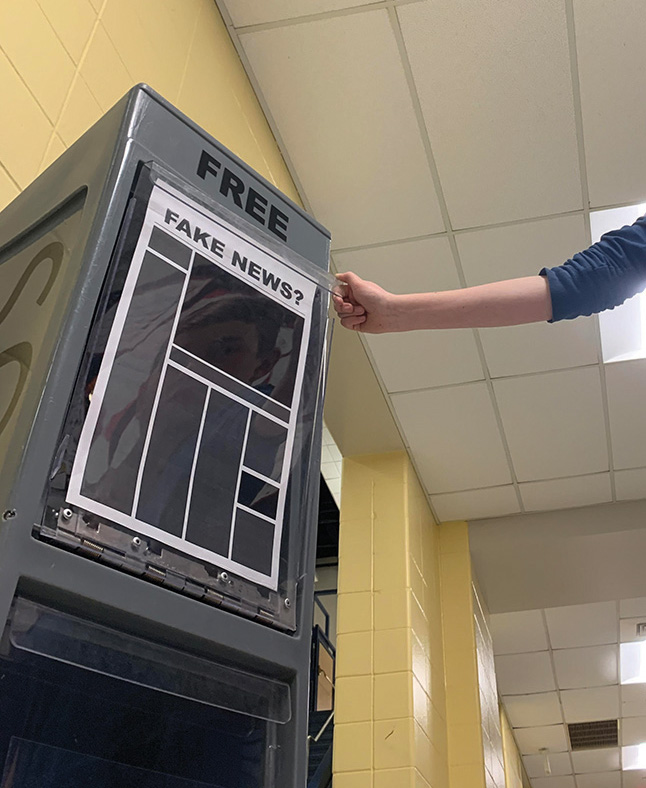Fake News Proves a Stumbling Block for Many
A whopping 86 percent of people polled said they had fallen victim to ‘fake news.’
When we asked students and teachers whether or not they felt they could trust everything they read online, the response was an overwhelming, “No.’’
Why not?
The term ‘fake news’ is generally accepted to have originated around the 2016 election, when websites with misleading news related to the upcoming election were found circulating on social media. Additionally, the term was circulated by President Trump throughout his 2016 campaign and subsequent presidency, dividing the nation over what was fact and what was fiction, essentially forcing people to consider what they should believe.
Mrs. Kelly Zatorsky, Bedford’s Library Media Specialist, classified fake news into four separate categories: news that was completely false, news that was written with a bias, news propaganda designed to influence, and news that shades data a certain way, making it hard for students to tell what exactly is going on.
PJ Loranger, an 8th grader, mentioned that websites can provide the “facade of credibility” while still distributing misleading articles.
More than 86 percent surveyed by the 2019 CIGI-Ipsos Global Survey on Internet Security and Trust said that they had fallen for a misleading news story at least once.
Fake news is a problem, not only around the world, but also here at Bedford.
Students are likely to fall for misleading stories when researching. Seventh grade red pod social studies teacher, Mr. Steve Cerny, says, “It is hard to identify an author’s bias in online articles, making it harder for middle schoolers to find out if an article is credible or not.” All of those interviewed agreed that with caution, and a few good research habits, students can steer clear of misleading websites.
Ms. Zatorsky, advises students to follow several steps when assessing whether or not an article is credible: Check the ending of the website’s URL, check for incorrect grammar, look at the “About us” section of the website, and cross check the website at least once. Green pod seventh grade social studies teacher, Ms. Alyssa Pepe, also mentioned corroboration, or cross checking, as an important part of the research process. If anything about any of these factors seems amiss, the website is most likely not a good source to use for research. You can also bypass these steps by using school-approved databases, which can be found on the Bedford Library Media Center website.
While it is important to recognize that fake news is a problem, it is more important to recognize that we do not have to be the victims of online misinformation.
Bedford students can and should combat fake news with conscientious and careful research.



